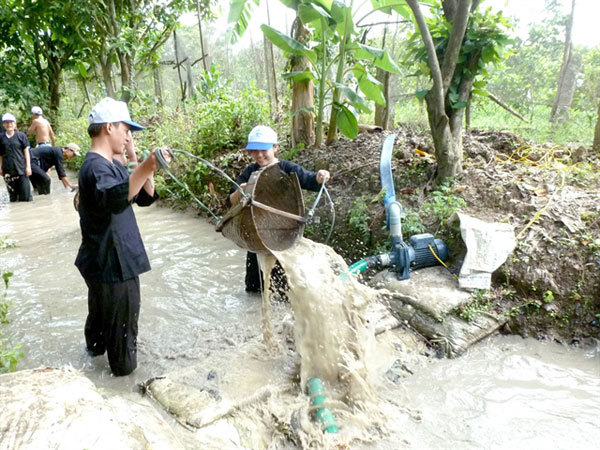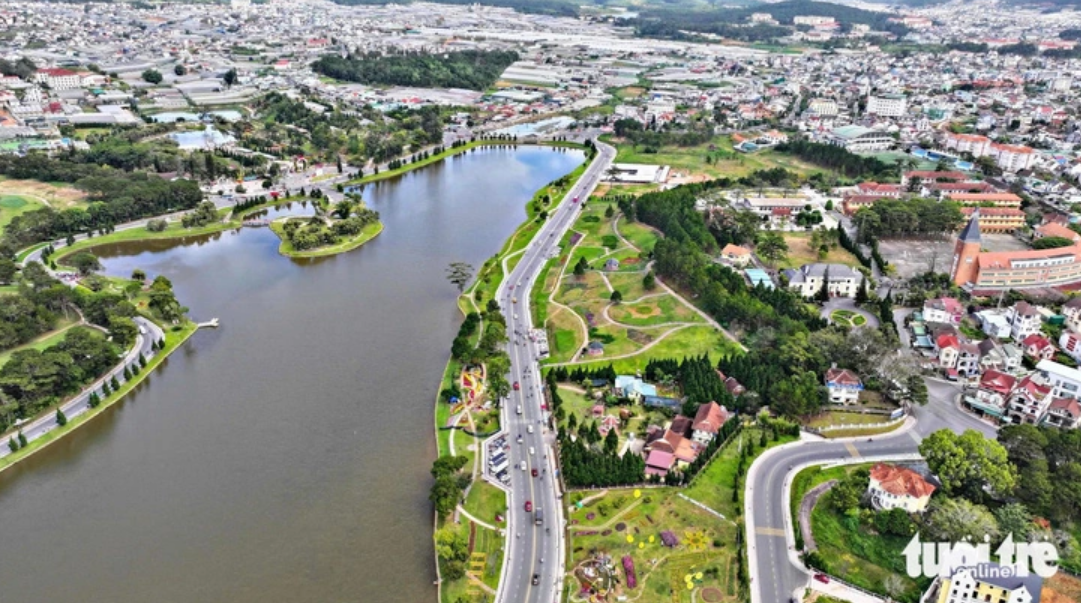 |
| Visitors to rural districts enjoy catching fish. Photo sggp.org.vn |
Activities in the districts Hoc Mon, Cu Chi, Binh Chanh, Nha Be and Can Gio are especially convenient for people who have restricted travel amid the COVID-19 pandemic.
Visitors can enjoy family boat trips on the Saigon River and learn how people raise salangane birds and then taste the soup made from Can Gio Salanganes’ nests.
In Cu Chi District, they can learn how to be a rice farmer and see how traditional crafts and rice paper are made. The ‘‘Một Thoáng Việt Nam (Vietnam at a Glimpse)’’ tourist site in Cu Chi, for example, is a popular destination for domestic and foreign tourists.
Nguyen Hai Yen, a visitor who lives in Tan Phu District, said that her daughter, instead of looking on the internet, can watch mulberry cultivation, silkworm rearing and weaving in person in rural districts.
More investment needed
Although agrotourism has become more popular, it has not met its potential because of a lack of funds to support locals and poor connections among tourism businesses.
For instance, a famous centuries-old knitting village in Xuan Thoi Thuong Commune in Hoc Mon District sells many items abroad, but does not attract many visitors.
As the pandemic continues, people prefer to visit destinations near their homes. The tourism industry, travel agencies and specialised organizations need to find new directions for agrotourism and ecotourism, Nguyen Minh Man, head of TST Tourist’s communications and marketing department, said.
The city Department of Tourism has recently cooperated with travel agencies such as Saigontourist, Vietravel, Fiditour – Vietluxtour and TST Tourist to offer a variety of tours in Cu Chi District. These include visits to handicraft villages, hi-tech agricultural zones and the famous Cu Chi Tunnels.
The department has also launched two tours called “Flowers blooming on the land of white gold’’ and ‘‘Thiềng Liềng – a peaceful place’’.
The first will visit oat farms and the Nghe bats area conservation, enjoy crab-catching, and kayak in the sea mangrove forests in Can Gio.
On the ‘‘Thiềng Liềng – a peaceful place’’ tour, people will learn about salt making from Can Gio locals and participate in community tourism activities.
Visitors on the tour called ‘‘Back to the village in the capital city’’ will understand more about old communal houses in Cu Chi, and visit dairy farms and Koi fish garden houses.
The ecotourism trend, which has received more attention from both travellers and businesses in recent years, is a good sign for agrotourism. Tourists want to have new experiences and engage in conservation activities. Forms of sustainable tourism in eco-friendly destinations have the potential to expand in the future.
VNS



